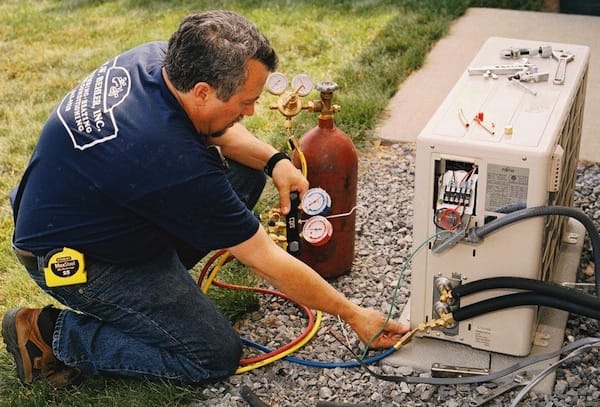Ductless mini-split systems are among the best technologies for retrofit applications – whether for additions, whole-home cooling or to improve interior comfort for spaces lacking sufficient HVAC. Rapidly increasing energy costs are another very forceful influence in the push for ductless technology. These systems today offer efficiencies up to 33 SEER, a rather amazing leap in system efficiency.

A key contributor to ductless system energy efficiency has been the introduction of “inverter” technology. Though it’s been in use for a decade or more in Eastern and European countries, it’s just now catching on here at home.
“Old school, on-off technology for any type of HVAC equipment is rapidly losing its appeal here in the land of plenty,” says installer Dave Yates, who owns York, PA-based F. W. Behler, Inc., a full-service HVAC and plumbing and mechanical contracting firm.
The new approach is the use of equipment that systematically changes or modulates its energy production to match heat loss and gain. Microprocessor control intelligently guides the function of variable speed system output, the difference — if the system were a car — between punching the gas or feathering it.
The inverter function modulates single-phase 208 to 230 volt AC supplied to the outdoor condenser by filtering and rectifying the current, channeling it through a smoothing capacitor to finally concert it to a stable, clean DC electrical current. The rectified DC current is then boosted up to 380 volts and chopped and pulsed into blocks of current at different hertz to simulate three phase AC current. Three-phase compressor motor speeds are then controlled precisely, with refrigerant flow electronically metered to match both the compressor and blower speeds.
The “brain” behind it all is a computerized logic module or control board in the outdoor unit that communicates with system sensors and the indoor unit.

The system continuously monitors indoor and outdoor temperatures. Sensors feed this information to the control board. If anything goes wrong, a fault code indicates what’s going on with the equipment. That way, the homeowner or business owner can often take care of minor issues such as filter maintenance without the need to call for service. Or, if a technician is needed, they can respond to more detailed fault codes.
Not long ago, Yates put a 1-ton Fujitsu ductless system in for the Thomas family of Manheim, PA. When they built their home years ago, the Thomas’ were sure that the bonus room above the three-bay garage would be used for storage. But eventually they chose to turn it into a media room. During his first visit there, Yates recommended a ductless split system heat pump. It was an ideal fit for the room because there was no way to easily connect it to the home’s existing central HVAC system.
Use of a mini-split heat pump would avoid many time-consuming, disruptive and expensive central HVAC alterations. And the family could quickly have a system that would condition the interior space, exactly where and when they most wanted it.
The Thomas’ mini-split was installed by Yates and two technicians in three hours. “The room was noticeably cooler within minutes, and water was streaming steadily through the outside condensate line,” said Yates. “But when the homeowners checked on us toward the end of the job, they couldn’t believe the system was running – both the indoor fan coil and outside condensing unit operate so quietly that you have to strain to hear them.” For Mr. Thomas, this also meant that there would be no noise to interfere with the new surround-sound system.




Join the conversation: